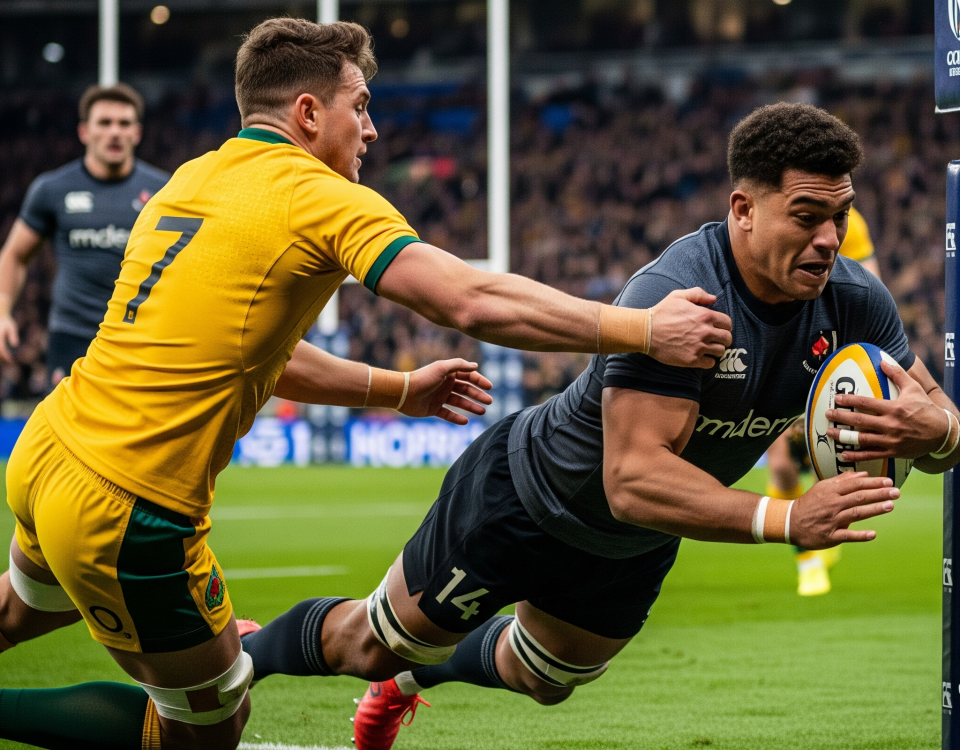
New Zealand All Blacks Secure Thrilling Last-Minute Victory Over Australia in Bledisloe Cup Opener

Maro Itoje: The English Lion Roaring Louder Than Ever On and Off the Pitch
The high ball, often known as the up-and-under or the Garryowen, is one of rugby’s most enduring tactical weapons, designed to create territorial pressure and unsettle receiving teams. For decades, it has been a staple in the playbook of sides looking to force errors, gain field position, or create an unstructured situation from which to attack. However, in the modern game, characterized by sophisticated defensive systems and highly skilled aerial athletes, a pertinent question arises: are teams becoming overly reliant on this traditional gambit, potentially at the expense of more creative attacking rugby?
The enduring popularity of the high ball is understandable given its potential benefits when executed effectively. A well-placed, contestable kick can turn a defense around, putting immense pressure on the back three to secure possession under duress, often with a fast-advancing chase line bearing down on them. This pressure frequently leads to handling errors, knock-ons, or fumbled catches, providing the kicking team with an excellent opportunity to regain possession in an advanced area of the field. Furthermore, even if the ball is caught cleanly, a strong chase can pin the receiving team deep in their own territory, allowing the kicking side to apply sustained territorial pressure. In wet or windy conditions, the high ball becomes an even more potent weapon, as fielding a swirling, slippery ball becomes significantly more challenging. For teams that excel in the kick-chase and an aggressive breakdown presence, it remains a cornerstone of their game plan.
Despite its strategic advantages, an overreliance on the high-ball tactic can lead to several downsides and has drawn criticism from spectators and analysts alike. When used excessively or without precision, it can result in a turgid, stop-start affair, with games devolving into a series of aerial ping-pong exchanges rather than showcasing fluid, attacking rugby. If the kick itself is inaccurate – too long, too short, or not providing a fair contest – possession is often gifted back to the opposition with little pressure applied. Moreover, a poorly organized or slow chase line negates the primary benefit of the kick, allowing skilled receivers ample time and space to field the ball and launch dangerous counter-attacks. Constant kicking can also stifle a team’s own attacking instincts, with players defaulting to the aerial route rather than seeking to exploit opportunities through running and passing rugby, leading to predictable offensive patterns.
In response to the frequent use of high balls, modern defensive units and individual players have significantly honed their counter-strategies. Fullbacks and wingers today are often exceptional aerial athletes, possessing not only secure hands but also the ability to leap high and claim possession assertively. Teams now employ sophisticated escorting lines, legally shielding their catchers and creating a secure pocket for them to operate within. Furthermore, the speed and efficiency of support players at the breakdown mean that even if a high ball is successfully fielded, the receiving team can often secure possession quickly and launch an effective exit strategy or counter-attack, negating the territorial advantage sought by the kicking team.
So, is the high-ball gambit being overused in modern rugby? The answer is nuanced and often depends on context. When used judiciously, as part of a varied tactical approach, considering factors like weather conditions, the quality of the kick and chase, and the specific weaknesses of an opponent, it remains an undeniably effective tool. However, it becomes problematic and can detract from the spectacle when it is employed as a default, low-risk option without sufficient tactical thought or execution, or when it dominates a team’s game plan to the exclusion of other attacking endeavors. The most successful teams typically demonstrate a balance, knowing when to apply aerial pressure and when to unleash their running game.
In conclusion, the high ball continues to hold a significant, albeit debated, place in the tactical landscape of modern rugby. Its effectiveness is not inherent in the act of kicking itself, but rather in its strategic application, the precision of its execution, and its integration within a broader, more multifaceted attacking framework. While its overuse can lead to predictable and less entertaining contests, its ability to create pressure and regain possession means it will likely remain a key component of rugby strategy, continually evolving as teams seek new ways to perfect both its use and its nullification.



